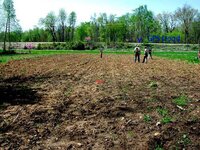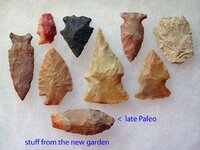Danimal
Bronze Member
Bronze pendant, found at 18" Help IDing
My arm was up to the elbow with my Lesche fully down when I finally got deep enough for my pinpointer to sound off. This was in a very compacted, mineralized soil matrix. Wheat pennies are found here at 6" often.
Under a loupe, what at first appears to be a battleaxe looks like an stylized bird. The pendant appears to be bronze, is quite heavy, and has no casting marks around the edge, and shows clear working marks so it seems to be carved in metal, not cast.
This was found in NE Ohio.
Any ideas?
My arm was up to the elbow with my Lesche fully down when I finally got deep enough for my pinpointer to sound off. This was in a very compacted, mineralized soil matrix. Wheat pennies are found here at 6" often.
Under a loupe, what at first appears to be a battleaxe looks like an stylized bird. The pendant appears to be bronze, is quite heavy, and has no casting marks around the edge, and shows clear working marks so it seems to be carved in metal, not cast.
This was found in NE Ohio.
Any ideas?


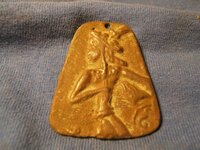
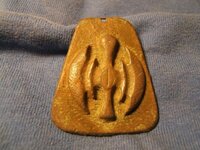
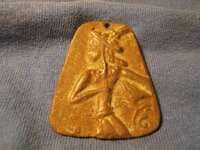
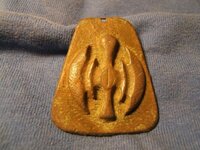


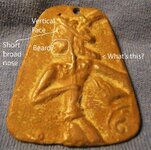
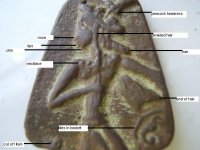

 )about this 6-7 yrs ago. His response was that "they already know about it" and "they (looters)should be shot", but nothing has been done about it. I tried again this summer and was blown off.
)about this 6-7 yrs ago. His response was that "they already know about it" and "they (looters)should be shot", but nothing has been done about it. I tried again this summer and was blown off.